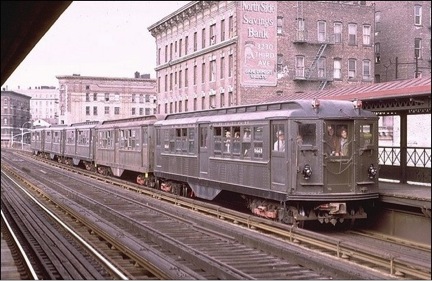Related

Jul 15,2014
Paul Romer's Keynote at the New Cities Summit
Dallas, TX - June 2014
by
Brandon Fuller

Working Paper
/ Apr 28,2014
The Formation of Urban Spatial Structures
Markets vs Design
by
Alain Bertaud
A recent study in New Geography by Wendell Cox, the principal of Demographia, demonstrates that traditional urban cores are concentrated in a few U.S. municipalities. Despite all the attention that these areas receive, the study concludes that the majority of U.S. cities have less than 5% of their population in their urban cores. The study also shows that these cores are not growing in area, and are actually shrinking as a share of total population. Is this trend a reflection of consumer preference for suburbs, as Cox might claim, or the result of anti-core regulations and subsidies?
The Cox study focuses on functional characteristics, rather than jurisdictional boundaries, in defining “urban core.” These characteristics include urban form, density, and travel behavior.
“There are four functional classifications, the urban core, earlier suburban areas, later suburban areas and exurban areas. The urban cores have higher densities, older housing and substantially greater reliance on transit, similar to urban cores that existed before the post-World War II automobile oriented suburbanization. Exurban areas are beyond the built up urban areas. The suburban areas constitute the balance of the major metropolitan areas. Earlier suburbs include areas with a median house construction date before 1980. Later suburban areas have later median house construction dates.”
New York dominates the “urban core” listing, with an urban core containing around 10.2 million people, or around 42% of the urban core population for the whole country, and stretching well-beyond the boundary of New York City proper, including portions of New Jersey and Long Island.

Six other metropolitan areas make up 36% of the core population. These are Chicago, Boston, Philadelphia, Los Angeles, and San Francisco. Those seven metropolitan areas (including New York) are the only ones with urban core populations of greater than 1 million. They include the six “transit legacy” cities, clearly indicating that the availability of mass transit, and the form of cities built in the mass transit era, is conducive to the development of dense urban cores.
More importantly, metropolitan areas have been decentralizing. According to the study, “Between 2000 and 2010, the urban core populations…dropped from 25.3% to 24.0% of their respective metropolitan populations.” The study also indicates that people are moving further out, including the decentralization of older suburbs, in favor of newer suburbs (built after 1980) and exurbs.
Overall, the pattern is toward population growth in areas with cheap, abundant land and transportation infrastructure that is oriented around the private automobile.
The study concludes by emphasizing that the planners of cities with strong urban cores were not driven by a desire for density, lower carbon emissions, or ideals about community. Rather, the development of dense urban cores occurred through the same mechanism as the development of inner suburbs, outer suburbs, and exurbs - consumer preferences matched with the current state of the art technology.
On the other hand, several studies have shown that these core areas produce an outsized share of economic activity, regardless of the share of population they contain. If these areas can indeed produce a higher than average level of economic activity, why are they failing to grow? It would seem that developers and municipalities would take steps to expand these core areas in order to reap the economic benefits, and consumers would want to live (or at least work) in areas where they could earn higher incomes.
One possible explanation focuses on the interaction between two different forms of regulation - one, exclusionary zoning in the suburbs, sets minimum lot and parking requirements, effectively putting a very low ceiling on density and building height. The other, height and building restrictions in the city center, makes it prohibitively hard to develop new housing. The combination of these two sets of rules restricts the amount of buildable land that is available for urban cores, and makes it difficult to increase the supply of housing within the current area. This prevents urban cores from expanding, despite their economic advantage.
Beyond the scope of the study, it’s easy to infer that more rapid and private transportation technology has made more land available within a commuter’s indifference zone (approximately 30 minutes from home to work). This, combined with an increase in per capita income since the early 20th century, has led to higher levels of land consumption per person, and lower urban densities. This means that in the absence of regulation, we still wouldn’t all live in urban cores. However, regulations make suburbs an easier choice, and limit the ability of the poor and middle class to live in economically productive central cities.
Check out the study here.
Please fill out the information below to receive our e-newsletter(s).
*Indicates required.